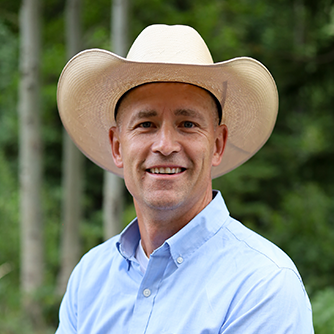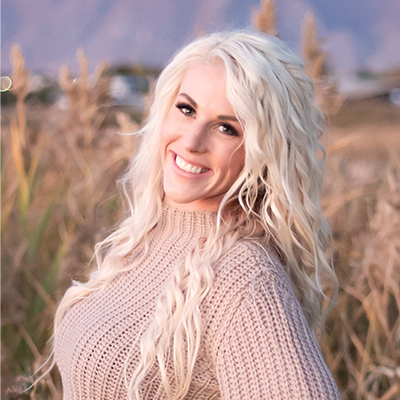Frequently Asked Questions (FAQs)
.webp)
Find Your Answers Quickly
Deadlines depend on the crop and county; we’ll walk you through what’s needed and when.
Premiums vary by crop, county, and coverage level—but they’re subsidized by the USDA, just like PRF. That makes solid protection affordable, especially in high-risk areas.
MPCI covers most row crops—corn, wheat, barley, sorghum, soybeans, and more. Availability depends on crop and county. We’ll help confirm what’s covered in your area.
Yes. Unlike PRF Insurance, you must report a notice of loss if your crop suffers. An adjuster will verify the damage before any indemnity is issued.
Yield Protection covers you if you lose bushels due to drought, hail, etc.
Revenue Protection includes that, but also protects against price drops. So even if yields are strong, a weak market could still trigger a check.
Your coverage is based on your proven APH (Actual Production History)—a multi-year yield average—and the level of protection you choose. You can select up to 85% of your APH. If your harvest falls below that guarantee, you may get an indemnity payment.
MPCI protects your planted acres from weather events like drought, flood, hail, heat, frost, and disease. Depending on the plan, it can cover both yield loss and price drops—so you’re not left empty-handed when harvest falls short or the market drops.
Yes. If you plan to graze and harvest the same crop in one year, you can use the Annual Forage – Dual Use option. This lets you insure your small grains crop in two ways:
- Annual Forage policy for grazing
- Multi-peril Small Grains policy for grain
The Dual Use option is only available in counties where RMA considers “grain/graze” a recognized farming practice. You can also carry a NAP policy for grazing through the Farm Service Agency (FSA). Since these programs cover different losses at different times, you can keep the benefits from both.
Annual Forage is available in Colorado, Kansas, Nebraska, New Mexico, North Dakota, Oklahoma, South Dakota, and Texas. Our experts can help confirm if Annual Forage is available in your specific county.
Yes. Just like PRF Insurance, Annual Forage is part of the USDA’s Risk Management Agency programs. Your premium is subsidized depending on your coverage level.
The policy uses NOAA data and the Rainfall Index to determine if the precipitation amounts will trigger an indemnity. It’s automatic, with no paperwork or adjusters.
You choose your planting/growing season and the two-month periods within those growing seasons when rainfall matters most for your forage. If precipitation during that window comes in below your selected coverage level (70%-90% of normal), it can trigger an indemnity payment.
No, this is not a yield-based policy. Annual Forage Insurance is based strictly on precipitation data for your area. You don’t have to report production, and there’s no claims process. The policy may trigger an indemnity if the rainfall index drops below your selected threshold.
Annual Forage covers crops grown primarily for grazing, haying, green chop, or silage. That includes crops like wheat, millet, rye, oats, and certain cover crops—anything used to support forage for your livestock.
If you're raising cow-calf pairs, running stockers, managing custom grazing operations, or producing forage, Annual Forage Insurance offers the flexibility to help you stay ahead of shifting conditions.
It provides coverage when precipitation during your growing season falls short of the county average. If conditions are dry enough, it can trigger an indemnity.
Actual Production History (APH) coverage is available for many crops that don’t qualify for revenue plans. That includes most perennial crops like apples, peaches, and grapes, as well as small grains like oats, rye, flax, and buckwheat.
Not every crop fits every plan. Our team can help you determine if APH coverage is a good fit for your operation.
An indemnity may be triggered if the value of your actual yield falls below your guarantee. The formula looks like this:
(Final Yield × Price) < (Guaranteed Yield × Acres)
If your production doesn’t meet the guarantee, the policy may pay an indemnity based on the difference.
APH coverage is based on your own yield history. The guarantee is calculated like this:
Approved APH Yield × Coverage Level = Guaranteed Yield
If your total production—harvested and appraised—is less than that guaranteed yield, your policy may trigger an indemnity.
To avoid being punished by a year you couldn’t plan for. Yield Exclusion helps preserve the integrity of your APH and protect your operation from long-term damage caused by one or even a few catastrophic years.
When you elect Yield Exclusion (YE), all eligible crop years are automatically removed from your APH history—unless you tell your agent otherwise.
If you want to keep a specific year in your APH, you must opt out by the production reporting deadline for your crop in your county. You can opt out for one or more crop years, but it has to be done by the deadline.

Please try and search again
.webp)





